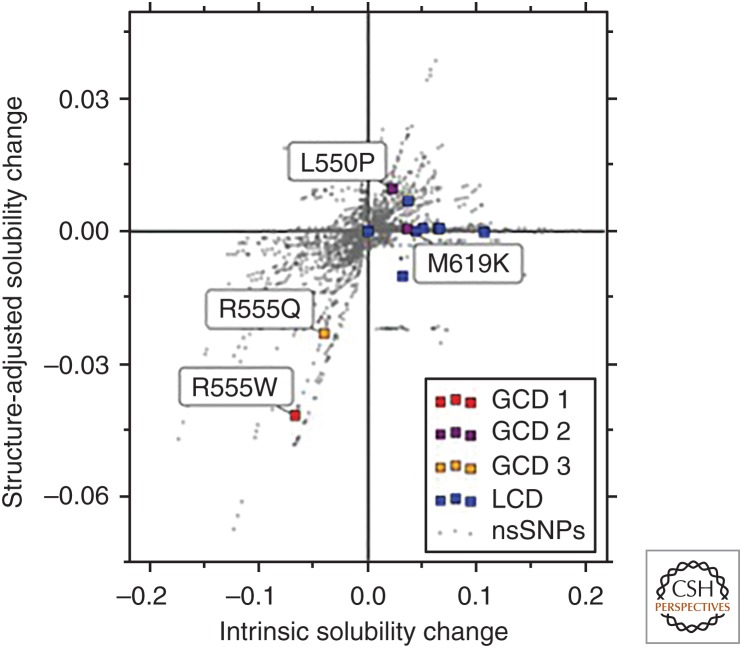Figure 3.
Predicted changes, using the CamSol method, in the intrinsic (x-axis) and structure-adjusted (y-axis) solubilities for all mutations from nonsynonymous single-nucleotide polymorphisms (nsSNPs) in Fas1-4 (Stenvang et al. 2018). Mutations associated with lattice corneal dystrophy (LCD) are shown in blue, and those associated with three subtypes of granular corneal dystrophy (GCD 1-3) are in red, purple, and orange for subtypes 1, 2, and 3, respectively. All LCD and GCD 2 mutations have little or no effect on the structure-adjusted solubility, consistent with the notion that they drive aggregation by indirectly increasing the aggregation propensity of Fas1-4 through destabilization of the native state. The GCD 1 mutation R555W is an extreme outlier in terms of decrease in solubility, according to both intrinsic and structure-adjusted predictions, and the GCD 3 mutation is predicted to decrease solubility more than any other corneal-dystrophy-associated mutation other than R555W, suggesting that GCD 1 and GCD 3 phenotypes are driven by loss of solubility of the folded Fas1-4 domain (adapted with permission from Stenvang et al. 2018).

